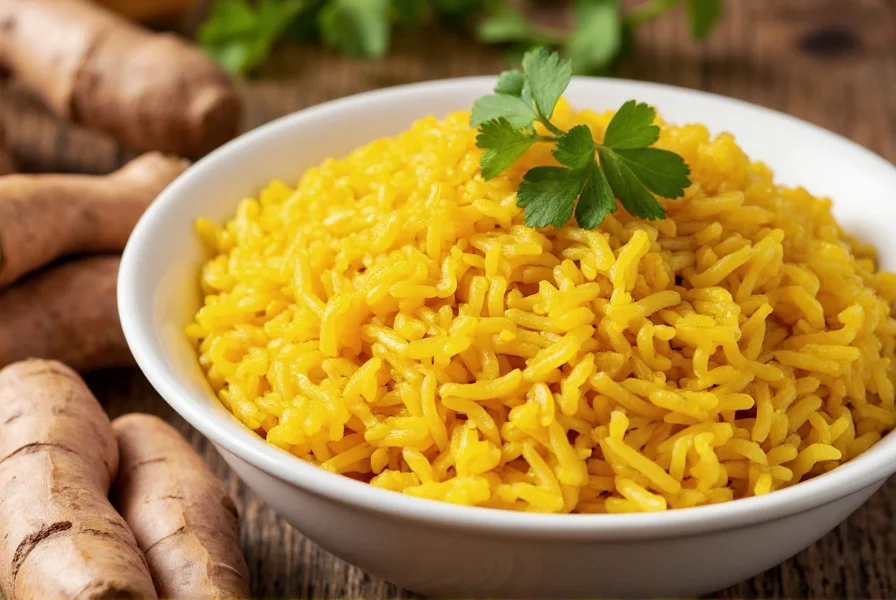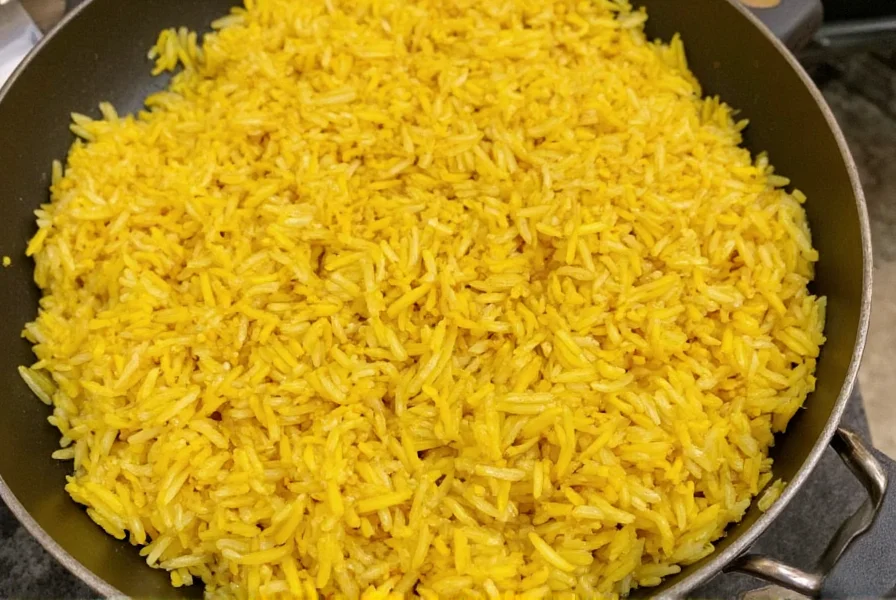Golden turmeric rice transforms ordinary rice into a nutritionally enhanced side dish with its distinctive color and subtle earthy flavor. This simple yet sophisticated preparation has been used for centuries across South Asian, Middle Eastern, and Southeast Asian cuisines, where turmeric’s vibrant hue symbolizes prosperity and its medicinal properties have been valued in traditional healing practices. The active compound curcumin in turmeric offers well-documented anti-inflammatory and antioxidant benefits, making this colorful rice not just visually appealing but also nutritionally superior to plain white rice.
The Science Behind Perfect Turmeric Rice
Creating exceptional turmeric rice requires understanding the culinary chemistry at play. Turmeric contains curcuminoids that are fat-soluble, meaning they bind better with oil than water. This explains why professional chefs always recommend blooming turmeric in oil before adding liquid—a technique that maximizes both flavor release and nutritional absorption. The ideal ratio of 1:1.5 for rice to liquid prevents mushiness while ensuring complete cooking, and the addition of a small amount of acid (like lemon juice) helps maintain the vibrant yellow color rather than letting it turn dull gray.
Essential Ingredients Breakdown
While basic turmeric rice requires minimal ingredients, each component plays a critical role in the final dish:
| Ingredient | Function | Substitution Options |
|---|---|---|
| Basmati rice | Provides long grains that stay separate when cooked | Jasmine rice, white long-grain rice |
| Turmeric powder | Imparts color and earthy flavor | Fresh turmeric root (1 inch grated = ¼ tsp powder) |
| Neutral oil | Activates turmeric's fat-soluble compounds | Ghee, coconut oil |
| Whole spices | Adds aromatic complexity | Cumin seeds, cardamom pods, bay leaf |
Step-by-Step Preparation Guide
Follow these professional techniques for flawless turmeric rice every time:
- Rinse and soak: Wash basmati rice under cold water until clear, then soak for 20 minutes to remove excess starch and ensure fluffy grains
- Bloom the turmeric: Heat 1 tablespoon oil in a saucepan over medium heat, add turmeric and whole spices, stirring for 30 seconds until fragrant
- Toasting technique: Drain soaked rice and add to the pot, stirring gently for 2 minutes until each grain is coated with the turmeric oil
- Liquid ratio: Add 1½ cups water or broth, 1/4 teaspoon salt, and a squeeze of lemon juice, bringing to a boil
- Perfect simmering: Reduce heat to low, cover tightly, and cook for 15-18 minutes without lifting the lid
- Resting period: Remove from heat and let stand covered for 10 minutes before fluffing with a fork

Avoiding Common Turmeric Rice Mistakes
Even experienced cooks encounter issues with turmeric rice. Here's how to prevent the most frequent problems:
- Muddy color: Adding turmeric directly to water instead of blooming in oil causes uneven color distribution. Always bloom turmeric in fat first
- Bitter taste: Using too much turmeric (more than 1/2 teaspoon per cup of rice) creates bitterness. Stick to the recommended ratio
- Sticky texture: Not rinsing rice properly leaves excess starch. Rinse until water runs clear for separate grains
- Dull appearance: Cooking in aluminum pots reacts with turmeric. Use stainless steel, glass, or ceramic cookware
Regional Variations and Customizations
Adapt this basic turmeric rice recipe to suit different culinary traditions and dietary needs:
- Indian style: Add cumin seeds, mustard seeds, and curry leaves to the oil before blooming turmeric for authentic flavor
- Thai adaptation: Substitute coconut milk for half the water and add lemongrass for tropical notes
- Vegan protein boost: Stir in cooked chickpeas or lentils after cooking for added nutrition
- Low-sodium version: Use vegetable broth without added salt and increase turmeric to 1/3 teaspoon for more flavor
- Anti-inflammatory powerhouse: Add black pepper (which increases curcumin absorption by 2000%) and a pinch of cinnamon

Serving and Storage Recommendations
Turmeric rice pairs beautifully with grilled proteins, roasted vegetables, or as a base for curry dishes. For optimal freshness, store leftovers in an airtight container in the refrigerator for up to 4 days. When reheating, add a teaspoon of water per cup of rice and cover to restore moisture. Freezing turmeric rice is possible for up to 2 months, though the texture may become slightly softer upon thawing. Never leave cooked rice at room temperature for more than 2 hours to prevent bacterial growth.
Frequently Asked Questions
Does turmeric rice stain cookware permanently?
Turmeric can temporarily stain light-colored cookware, but these stains are not permanent. To prevent staining, use stainless steel or glass cookware. If staining occurs, scrub with baking soda paste or lemon juice to remove the color. Avoid aluminum pots as turmeric reacts with the metal causing discoloration.
How can I increase the health benefits of turmeric rice?
To maximize health benefits, add a pinch of black pepper which increases curcumin absorption by up to 2000%. Cooking turmeric in oil rather than water enhances bioavailability of its active compounds. Using fresh turmeric root instead of powder provides additional beneficial compounds. Consuming turmeric rice with healthy fats like avocado or nuts further improves nutrient absorption.
Why does my turmeric rice turn gray instead of yellow?
Turmeric rice turns gray when exposed to alkaline conditions or cooked in reactive metals like aluminum. The solution is to add a small amount of acid (lemon juice or vinegar) to the cooking liquid, which maintains the vibrant yellow color. Always use non-reactive cookware such as stainless steel, glass, or ceramic for best results.
Can I make turmeric rice in a rice cooker?
Yes, you can make turmeric rice in a rice cooker. First, bloom the turmeric in oil using the 'sauté' function, then add rinsed rice and stir to coat. Add the appropriate water ratio (usually 1:1.25 for rice cookers), salt, and lemon juice. Cook on the regular rice setting. The key is blooming the turmeric in oil before adding liquid to ensure proper color and flavor distribution.
How long does turmeric rice stay fresh in the refrigerator?
Properly stored turmeric rice remains fresh in an airtight container in the refrigerator for 3-4 days. To maintain quality, cool the rice quickly after cooking and store within 2 hours. When reheating, add a small amount of water to restore moisture. For longer storage, freeze portions for up to 2 months, though texture may become slightly softer upon thawing.











 浙公网安备
33010002000092号
浙公网安备
33010002000092号 浙B2-20120091-4
浙B2-20120091-4